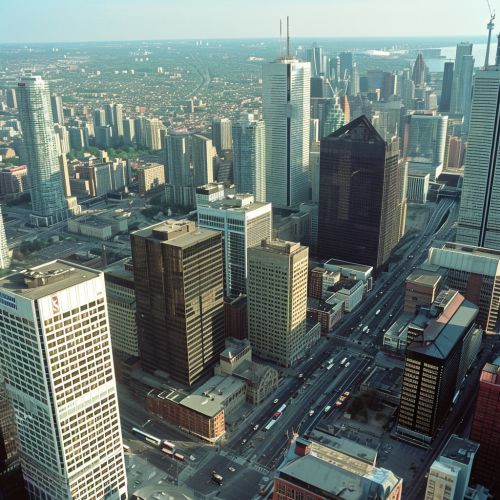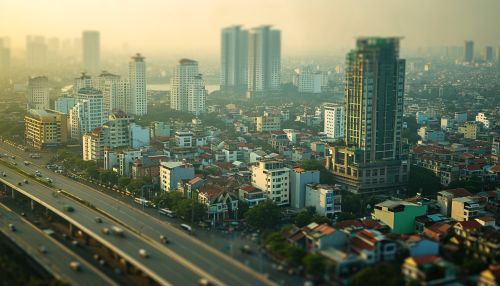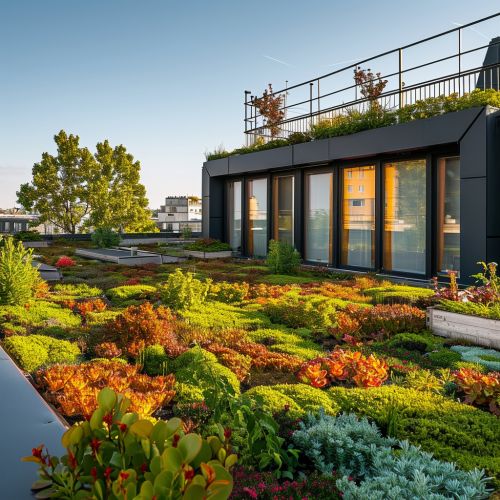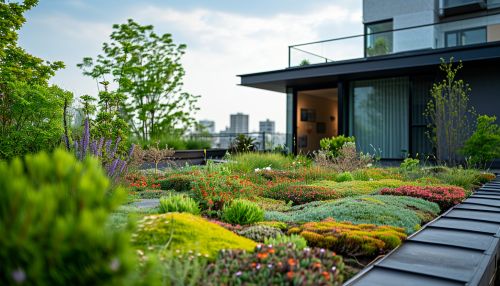Urban Heat Island Effect
Introduction
The Urban Heat Island Effect (UHI) is a phenomenon where urban or metropolitan areas experience significantly warmer temperatures compared to their surrounding rural areas. This is primarily due to human activities and the physical characteristics of buildings and roads in cities, which absorb and re-emit heat more than natural landscapes do urbanization.
Causes
The UHI effect is caused by a variety of factors, all of which contribute to the increased absorption and re-emission of heat in urban areas.
Urban Structures


Urban structures, including buildings and roads, are typically made from materials such as concrete and asphalt, which have high thermal mass. These materials absorb heat during the day and release it at night, contributing to higher nighttime temperatures in cities.
Lack of Vegetation
Vegetation plays a crucial role in regulating temperature. Plants absorb carbon dioxide and release oxygen through photosynthesis, which helps cool the surrounding air. In urban areas, the lack of vegetation means less cooling, leading to higher temperatures.
Energy Consumption
Urban areas consume a significant amount of energy for heating, cooling, and lighting, which contributes to the UHI effect. The energy used in buildings and for transportation is released as heat, further increasing urban temperatures.
Waste Heat
Waste heat from industrial processes and transportation also contributes to the UHI effect. This heat is not effectively dissipated in densely built-up areas, leading to higher temperatures.
Effects
The UHI effect has several impacts on both the environment and human health.
Climate Change
The UHI effect contributes to global warming and climate change by increasing the temperature of urban areas. This can exacerbate the effects of climate change in cities, leading to more extreme heat events.
Health Impacts
Higher temperatures in urban areas can lead to health problems such as heatstroke and respiratory difficulties. The elderly, children, and those with pre-existing health conditions are particularly vulnerable.
Energy Consumption
The UHI effect can increase energy demand for cooling in urban areas, leading to higher energy consumption and associated greenhouse gas emissions.
Water Quality
Increased temperatures can also affect water quality. Warmer waters can lead to algal blooms and reduced oxygen levels, which can harm aquatic life.
Mitigation Strategies
There are several strategies that can be used to mitigate the UHI effect.
Green Roofs


Green roofs, which are covered with vegetation, can help reduce the UHI effect by providing shade and removing heat from the air through evapotranspiration. They also act as insulators for buildings, reducing the need for artificial cooling.
Urban Forestry
Urban forestry involves the planting and maintenance of trees in urban areas. Trees provide shade and help cool the air through evapotranspiration, helping to mitigate the UHI effect.
Cool Pavements
Cool pavements are designed to reflect more sunlight and absorb less heat than traditional pavements, helping to lower temperatures in urban areas.
Energy Efficiency
Improving energy efficiency in buildings can help reduce the amount of waste heat released into the environment, thereby mitigating the UHI effect.
Conclusion
The Urban Heat Island effect is a significant issue that affects many cities around the world. However, with careful planning and the implementation of mitigation strategies, it is possible to reduce its impact and create more sustainable urban environments.
